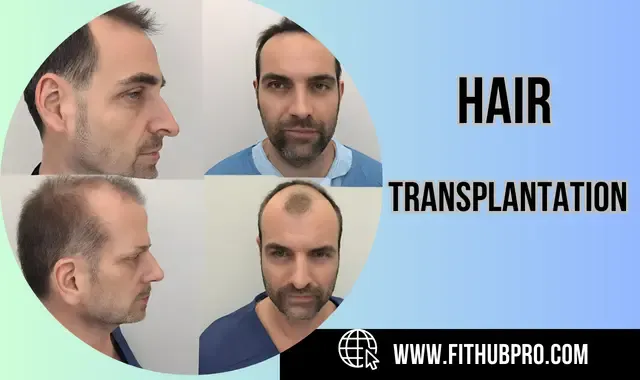\Hair Transplantation: Rediscovering Confidence and Locks


Hair Transplantation: Rediscovering Confidence and Lock
Types of Hair Transplant Procedures
Choosing the Right Candidate
Preparation for Hair Transplant Surgery
The Hair Transplant Procedure
Post-Operative Care
Potential Risks and Side Effects
Recovery Timeline and Expectations
Cost Considerations and Financing Options
Innovations and Advancements in Hair Transplantation
Alternative Hair Restoration Solutions
Common Myths and Misconceptions
Choosing a Reputable Hair Transplant Clinic
Hair Transplantation: Rediscovering Confidence and Locks
Hair loss can be a challenging experience, affecting not only one's physical appearance but also their self-esteem. In recent years, the field of hair transplantation has witnessed remarkable advancements, offering hope to those grappling with hair loss. This article aims to guide you through the intricate world of hair transplantation, providing insights into the procedures, considerations, and post-operative care.
Hair transplantation is a surgical procedure designed to address hair loss by transplanting hair follicles from one part of the body, typically the back or sides of the scalp, to the balding or thinning areas. The roots of this practice can be traced back decades, with evolving techniques making it a viable and effective solution for many.
Types of Hair Transplant Procedures
Follicular Unit Transplantation (FUT)
FUT involves removing a strip of scalp from the donor area, dissecting it into individual follicular units, and then implanting them into the recipient site. This method is known for its efficiency and ability to transplant a large number of grafts in a single session.
Follicular Unit Extraction (FUE)
FUE is a more modern approach, involving the extraction of individual hair follicles directly from the donor site and implanting them into the recipient area. This technique is minimally invasive, leaving no linear scar, and is often preferred for its quicker recovery time.
DHI (Direct Hair Implantation)
DHI is a variation of FUE where the extracted follicles are implanted directly into the recipient site without the need for incisions. This method provides precise control over the angle, direction, and depth of the implanted hair follicles.
Choosing the Right Candidate
Determining eligibility for a hair transplant involves assessing various factors such as the extent of hair loss, the stability of the donor area, and overall health. A consultation with a qualified hair transplant specialist is crucial to understand the individualized approach needed for each case.
Preparation for Hair Transplant Surgery
Before undergoing the surgery, patients receive detailed pre-operative care instructions. Mental and emotional preparation is equally vital, as managing expectations and understanding the recovery process contribute to a more positive experience.
The Hair Transplant Procedure
The actual procedure involves several phases, including administering anesthesia, extracting hair follicles, and meticulously implanting them into the recipient site. The precision of these steps plays a pivotal role in achieving natural-looking results.
Post-Operative Care
Immediate aftercare instructions focus on protecting the newly transplanted hair and promoting healing. Long-term care involves avoiding certain activities and using prescribed medications to optimize the growth and health of the transplanted hair.
Potential Risks and Side Effects
While hair transplantation is generally safe, like any surgical procedure, it carries some risks and potential side effects. Addressing concerns and misconceptions is essential, and patients should be aware of the steps taken to minimize these risks.
Recovery Timeline and Expectations
Understanding the normal healing process and recovery timeline helps manage expectations post-surgery. Patience is key as the transplanted hair gradually grows and integrates with the existing hair.
Cost Considerations and Financing Options
The financial aspect of hair transplantation is a crucial consideration. Exploring cost factors and available financing options ensures that individuals can make informed decisions based on their budget and priorities.
Innovations and Advancements in Hair Transplantation
Technological advancements continue to shape the field of hair transplantation. From robotics-assisted procedures to improved graft survival rates, staying informed about these innovations allows patients to make choices aligned with the latest developments.
Alternative Hair Restoration Solutions
For those hesitant about surgical options, non-surgical alternatives such as topical medications and laser therapy exist. Understanding the pros and cons of these alternatives aids individuals in making the right choice for their unique situation.
Common Myths and Misconceptions
Dispelling myths surrounding hair transplantation is crucial for fostering realistic expectations. Addressing concerns about pain, scarring, and the permanence of results helps individuals make informed decisions about pursuing the procedure.
Choosing a Reputable Hair Transplant Clinic
Selecting a reputable clinic is paramount to the success of a hair transplant. Factors such as the surgeon's experience, clinic reputation, and patient reviews should be carefully considered to ensure a positive and satisfying experience.
Conclusion
In conclusion, hair transplantation is not just a medical procedure; it's a journey towards rediscovering confidence and embracing a fuller head of hair. With careful consideration, preparation, and choosing the right clinic, individuals can embark on this transformative experience with optimism.
(FAQs)
Is hair transplantation painful?
- The procedure is performed under local anesthesia, minimizing discomfort during the surgery. Postoperative pain is generally manageable with prescribed medications.
How long does it take to see results after a hair transplant?
- Initial growth may be visible within a few months, but optimal results can take up to a year as the transplanted hair gradually thickens and matures.
Are there any age restrictions for hair transplantation?
- While there is no strict age limit, candidates should have stabilized hair loss patterns. A consultation with a specialist helps determine suitability based on individual factors.
Can I color or style my transplanted hair?
- Yes, once the transplanted hair has fully grown, it can be treated like natural hair. Coloring, styling, and cutting are possible according to personal preferences.
Are there any long-term side effects of hair transplantation?
- In most cases, there are no significant long-term side effects. Choosing a skilled surgeon and following post-operative care instructions minimizes potential risks.
